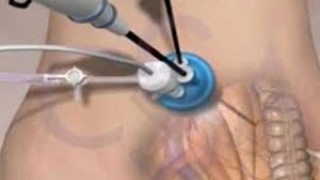Revolutionizing Hernia Surgery: How Robotics is Enhancing Inguinal Hernia Repair for Patients
Add to
Share
1,608 views
Report
2 years ago
Description
Inguinal hernia repair is a common surgical procedure that involves pushing protruding tissues back into the abdomen and repairing the abdominal wall. Historically, this procedure was performed through an open incision, which could result in a longer recovery time and more discomfort for the patient. However, with the advent of robotic technology, surgeons can now perform inguinal hernia repair with greater precision, less invasiveness, and shorter recovery times. Robotic inguinal hernia repair involves the use of a robotic surgical system, which allows surgeons to perform surgery through tiny incisions using a robotic arm. The robotic arm is controlled by the surgeon, who uses a console to operate the instrument. The robotic arm provides greater precision and control than traditional laparoscopic surgery, allowing surgeons to manipulate the tissue more delicately. The benefits of robotic inguinal hernia repair are numerous. Patients experience less pain and a shorter recovery time, as the procedure is less invasive and requires smaller incisions. Additionally, the robotic system provides greater visibility for the surgeon, reducing the risk of complications during the procedure. Patients can return to their normal activities sooner and experience fewer limitations on their daily lives. Overall, robotic inguinal hernia repair represents a significant advancement in surgical technology and is rapidly becoming the standard of care for this procedure. With its many benefits for patients, it is clear that robotics is revolutionizing hernia surgery and enhancing the quality of life for those who undergo this common procedure. Robotic inguinal hernia repair is a minimally invasive surgical technique that uses the latest advancements in robotics technology to enhance the precision, accuracy, and safety of the procedure. The technique offers many benefits to patients, including shorter hospital stays, faster recovery times, and reduced postoperative pain. Robotic inguinal hernia repair is typically performed under general anesthesia and usually takes between one to two hours to complete. During the procedure, the surgeon makes small incisions in the abdomen and inserts a laparoscope, which is connected to a high-definition camera that provides a clear view of the hernia. The surgeon then uses a console to control the robotic arm, which is equipped with surgical instruments that are used to repair the hernia. The robotic arm provides greater dexterity and precision than traditional laparoscopic instruments, allowing the surgeon to manipulate the tissue with greater ease and accuracy. Because robotic inguinal hernia repair is a minimally invasive technique, patients typically experience less pain and discomfort following the procedure, and the recovery time is generally shorter than with traditional open surgery. Patients can usually return to their normal activities within a few weeks, and the risk of complications is reduced. In addition to the benefits to patients, robotic inguinal hernia repair also offers advantages to surgeons. The robotic system provides a more ergonomic operating environment, reducing the risk of repetitive strain injuries and other physical discomforts that can result from prolonged surgical procedures. Overall, robotic inguinal hernia repair is a safe and effective surgical technique that offers many advantages to both patients and surgeons. With continued advancements in robotics technology, it is likely that the technique will become even more widely used in the future, further enhancing the quality of care for patients with inguinal hernias. Inguinal hernias are a common medical condition that affects millions of people each year. They occur when tissue, such as part of the intestine, protrudes through a weak spot in the abdominal wall, causing pain and discomfort. While inguinal hernias can be treated surgically, traditional open surgery involves a larger incision and longer recovery time, which can be a significant burden for patients. Robotic inguinal hernia repair has emerged as a minimally invasive alternative to traditional open surgery. This procedure uses advanced robotics technology to repair the hernia, which offers many benefits over traditional open surgery. The procedure involves making small incisions in the abdomen, which reduces the risk of complications and shortens the recovery time. The use of robotic technology also provides greater precision and accuracy during the procedure, which minimizes the risk of injury to surrounding tissues and organs. One of the primary advantages of robotic inguinal hernia repair is the reduced recovery time. Because the procedure is minimally invasive, patients experience less pain and discomfort, which allows them to return to their normal activities more quickly. In addition, the small incisions used in robotic surgery often heal faster than larger incisions used in traditional open surgery. Another advantage of robotic inguinal hernia repair is the reduced risk of complications. The use of robotic technology allows for greater accuracy and precision during the procedure, which reduces the risk of injury to surrounding tissues and organs. This results in a lower risk of complications, such as bleeding, infection, or damage to nearby organs. Robotic inguinal hernia repair also offers benefits to surgeons. The use of robotic technology allows surgeons to perform the procedure with greater precision and accuracy, which reduces the risk of fatigue and errors. This can lead to better outcomes for patients and a reduced risk of complications. Despite the many benefits of robotic inguinal hernia repair, the procedure is not suitable for everyone. Patients with complex hernias or other medical conditions may not be eligible for robotic surgery. Patients should consult with their doctor to determine if robotic inguinal hernia repair is an appropriate treatment option for their specific medical condition. In conclusion, robotic inguinal hernia repair is a safe and effective surgical technique that offers many benefits over traditional open surgery. The use of advanced robotics technology allows for greater precision and accuracy during the procedure, which leads to faster recovery times and a reduced risk of complications. With continued advancements in robotics technology, it is likely that the use of robotic surgery will become even more common in the treatment of inguinal hernias.
Similar Videos






